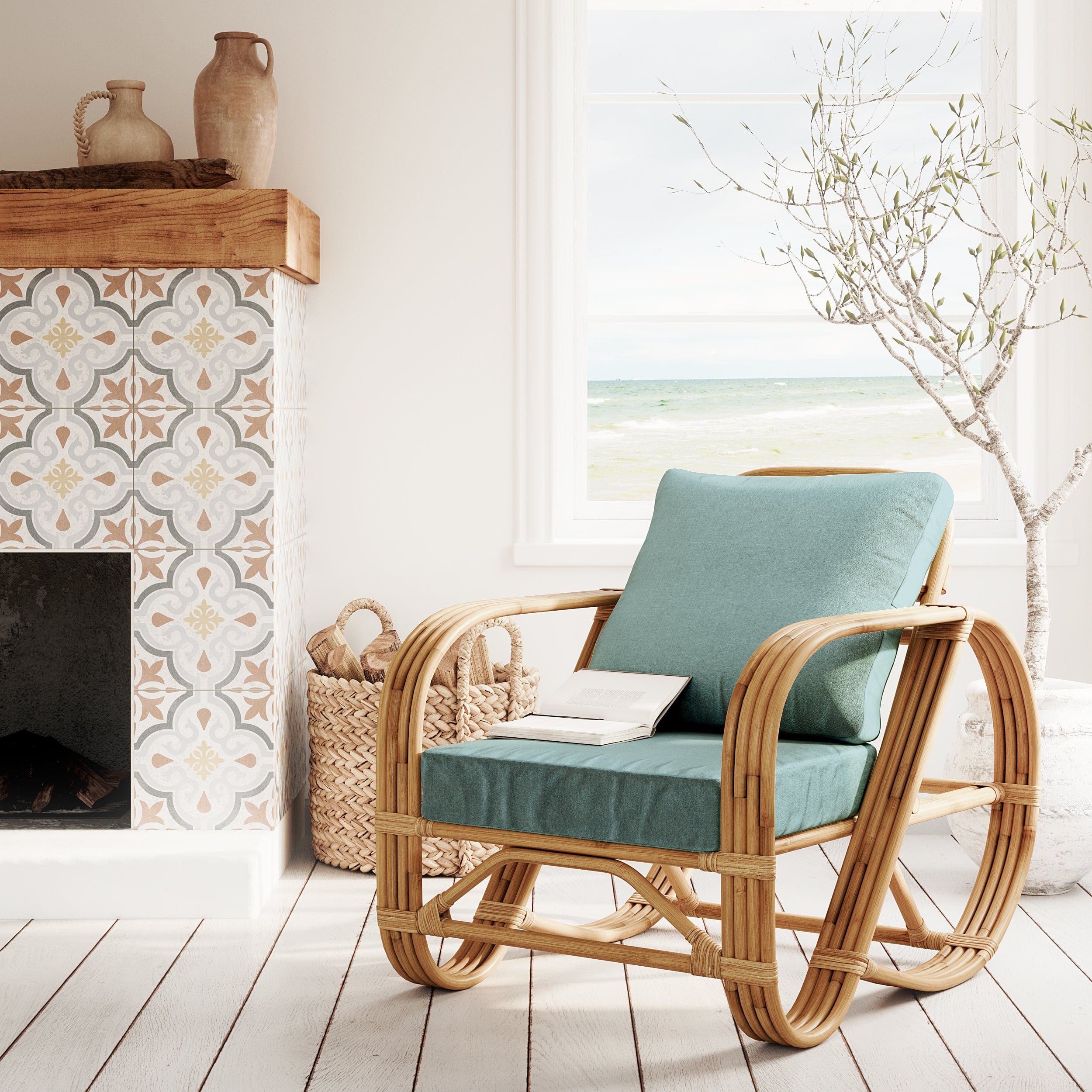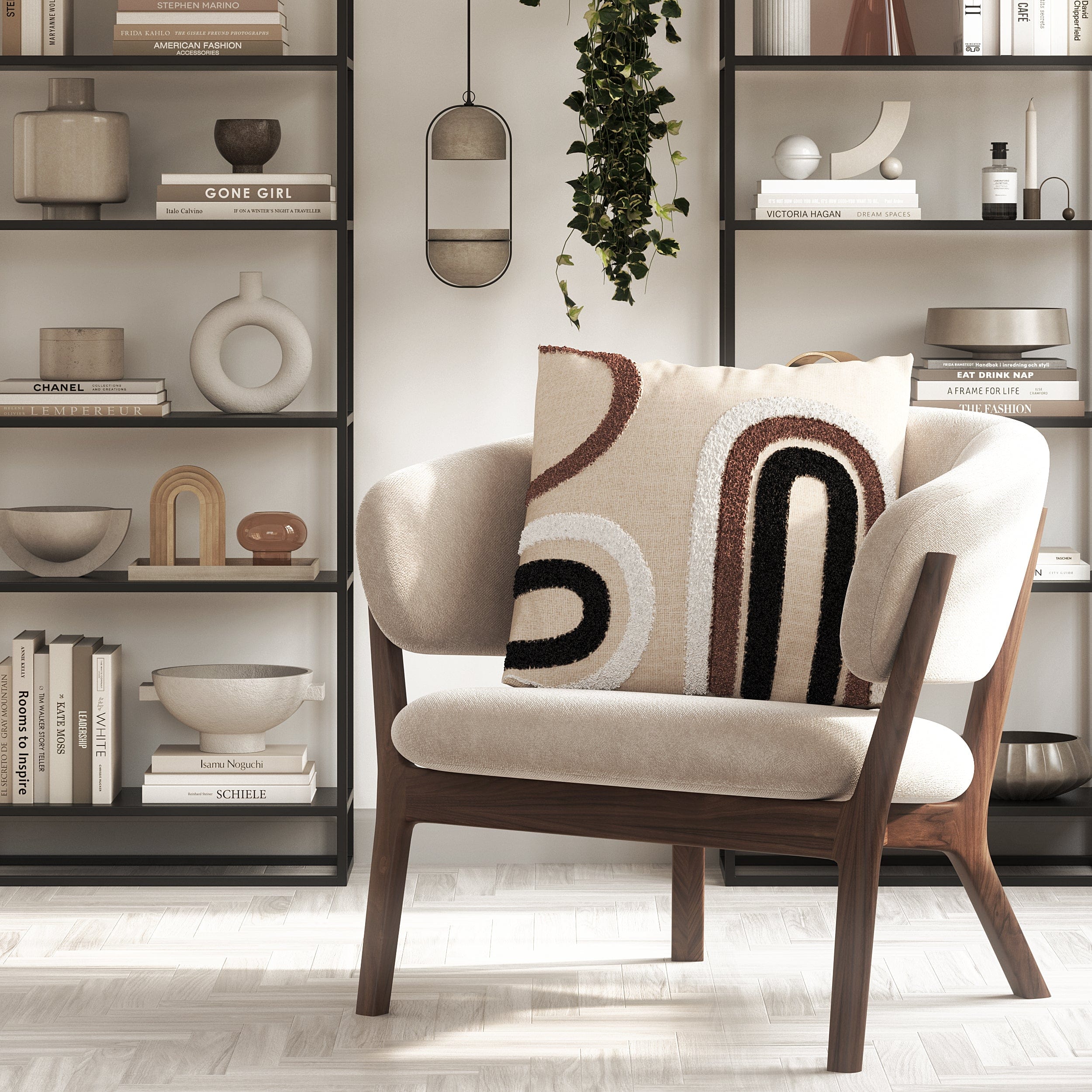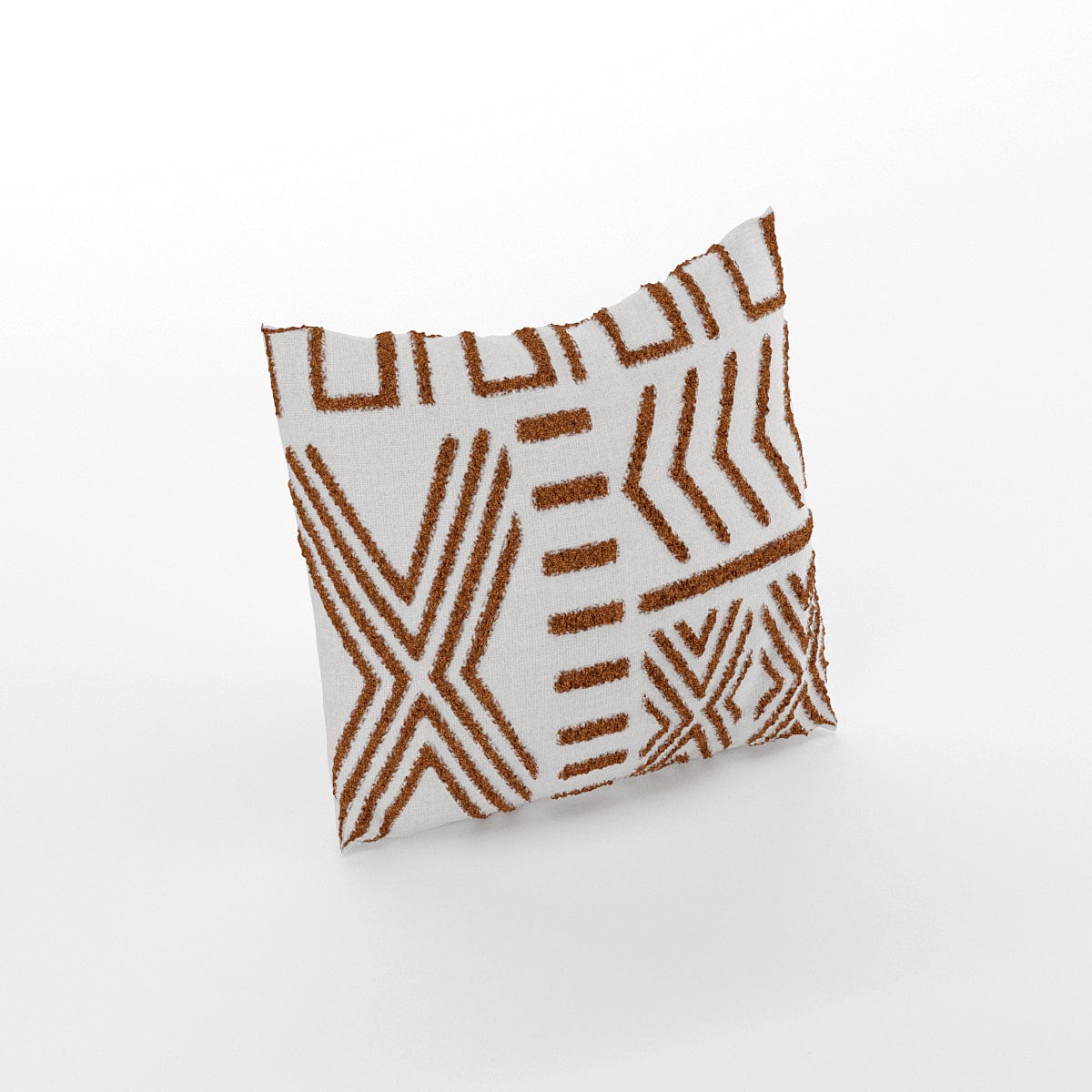🤍 Unmatched Quality, Authentic Craftsmanship
🤍 Unmatched Quality, Authentic Craftsmanship
🤍 Unmatched Quality, Authentic Craftsmanship
When it comes to choosing a chair for sitting, there are many options available, such as metal, plastic, or wooden chairs. But is a wooden chair good for sitting?
The answer to that question can depend on many factors.
Generally speaking, wooden chairs provide more support and comfort than metal or plastic chairs.
This is because wood has natural cushioning properties that make it an ideal material for long periods of sitting.
In this comprehensive guide, we will explore the benefits and drawbacks of sitting on a wooden chair.

Whether you are considering a wooden chair for your home, office, or any other space, this guide will provide you with the information you need to determine if a wooden chair is the right choice in terms of aesthetics, material, comfort, and supportive seating.
You will also learn about the factors to consider when buying a wooden chair, such as the ergonomics, the dimensions of the chair, and the maintenance.
We will also give you some tips for sitting properly on a wooden chair.
So, keep reading to discover the advantages of sitting in a wooden chair and find out if it's the right fit for you.
There are various chair options available; however, wooden chairs offer several notable advantages.
Wooden chairs are not only aesthetically pleasing but also extremely durable.

Let's explore some of the benefits of sitting on a wooden chair below:

Wooden chairs are made of natural and eco-friendly materials, making them an excellent choice for those who care about the environment.
The wood used to create wooden chairs is typically sustainably sourced, meaning that it has been harvested in a way that does not harm the environment.
Additionally, wooden chairs are biodegradable and can be recycled or repurposed as needed. This makes them a much greener option than plastic or metal chairs.
So, if you are looking for an environmentally friendly choice, a wooden chair is the perfect option.
Wooden chairs are known for their durability and longevity.
Wood is a strong material, making the chairs highly resistant to wear and tear that can occur over time.
In addition, wooden chairs are also resistant to rotting, mildew, and decay.
Furthermore, if they are properly maintained and cared for, wooden chairs can last for decades without showing signs of damage or wear.
So, if you want a chair that will stand the test of time, a wooden chair is a great choice.
Wooden chairs provide a high level of comfort and support for individuals who sit on them.
The wooden structure is designed to evenly distribute weight across the surface, which helps reduce pressure on the body.
The natural shape of the wood also works to provide a comfortable seating experience.
In addition, many wooden chairs are upholstered with cushioning materials such as foam or fabric, adding further comfort for the user.
Therefore, wooden chairs can provide a comfortable, supportive seating experience.
Wooden chairs have a high level of versatility, making them suitable for various spaces.
Wooden chairs can easily be incorporated into many different types of interior design styles.
Their universal appeal makes them a suitable choice for various settings, including homes, offices, restaurants, cafés, bars, and more.
Wooden chairs have a natural aesthetic that adds warmth and elegance to any space, making them a great choice for those seeking a classic and sophisticated look.
Thus, wooden chairs are a great option for those looking for an aesthetically pleasing seating solution.
In summary, wooden chairs provide a great combination of comfort, support, and aesthetic appeal.
With every product come benefits as well as drawbacks. As we discussed some of the benefits of sitting in a wooden chair, let's now take a look at some of the potential drawbacks.
Every chair has its pros and cons, whether it is a wooden chair, a plastic chair, or a metal chair.
With lots of benefits, as discussed in the last section, the wooden chair comes with a few drawbacks, some of which are as follows:
Wooden chairs are not typically adjustable, as it can be challenging to make structural changes to modify the chair's height or angle.
This makes wooden chairs less suitable than plastic or metal options for those who require adjustable seating solutions.
Furthermore, wooden chairs may need additional hardware, such as brackets or screws, in order to make these adjustments.
Additionally, wooden chairs may be susceptible to cracking or warping with frequent use over time.

Wooden chairs can be quite stiff and uncomfortable for some users, especially when sitting for long periods.
This makes them unsuitable for those who require a softer seating experience.
The stiffness of wooden chairs is due to the hardwood used in their construction, and there are no adjustments or modifications that can be made to soften the chair.
Additionally, wooden chairs may cause discomfort for those with back problems.
After considering the advantages and disadvantages of sitting in a wooden chair, it is important to explore the factors that should be considered before choosing one.
When choosing a wooden chair, there are several factors to consider, such as size, shape, ergonomics, and maintenance.
All factors should be considered when determining the suitability of the chair for its intended use.
Ergonomics is an important factor to consider when choosing a wooden chair.
Ergonomic chairs are designed to support the user’s body in the most comfortable and natural position possible.
This helps reduce strain on the spine, neck, and shoulders and can help prevent back pain.
Ergonomically, a wooden chair should have a curved backrest, wide armrests, and an adjustable height.
Moreover, a wooden chair should have a strong and stable base with anti-slip feet for improved stability.
These features of a wooden chair make it ergonomically suitable for long periods of sitting.
When choosing a wooden chair, size is an important factor to consider.
The chair should be the right size for its intended use.
A wooden chair should be wide enough so that the user's legs can fit comfortably underneath it, with enough room to accommodate movement.
Furthermore, it should have a backrest that is at least 12 inches high to provide adequate support for the spine.
Additionally, the seat should be at least 15 inches deep to ensure proper posture when sitting.
With the right size and dimensions, a wooden chair can provide maximum comfort and support.
Once a wooden chair is chosen, proper maintenance and care are essential to ensure it lasts for many years.
Wooden chairs should be regularly cleaned to remove dust and debris, either by vacuuming or wiping.
Regularly checking the chair's joints is important to ensure that all screws and hardware are secure.
In addition, it is recommended to oil or wax the chair every few months to ensure it retains its appearance.
By following these tips, a wooden chair can provide durable and reliable service.
Overall, wooden chairs are a practical option for individuals in search of long-lasting and comfortable seating options.
They offer great support and aesthetic appeal and are easy to maintain with regular cleaning and care.
However, it is important to consider the factors discussed above when selecting a wooden chair.
By keeping these factors in mind, you can ensure that you find the perfect chair for you and your needs.
In the next section, we will share our tips for proper sitting when using a wooden chair.
When using either a leather chair, a plastic chair, or a wooden chair, it is important for individuals to adhere to proper sitting techniques to minimize health issues and maximize comfort.
Here are some guidelines for sitting on a wooden chair to promote comfort and minimize health risks.
Maintaining a correct posture is essential when sitting on a wooden chair to ensure maximum comfort and support.
Poor posture can cause strain on the spine and neck. Blood flow can also be restricted with bad posture, leading to fatigue.
Therefore, when sitting, make sure your back is straight and upright, with your feet firmly planted on the ground.
Additionally, your shoulders should be relaxed, and the arms should rest at the sides of the chair in a comfortable position.
Furthermore, adjust the height of the chair so that your thighs are parallel to the ground.
This will help in blood circulation and will also help in reducing back pain.
By following these tips, you can ensure that your posture is correct and comfortable while sitting on a wooden chair.

Cushions or pillows are a great way to add extra comfort and support when sitting on a wooden chair.
Cushions can help reduce the pressure points in your body, preventing back pain and discomfort from long periods of sitting.
They also provide additional padding for the seat, making it more comfortable to sit on.
Pillows are also ideal for providing additional lumbar support, as they can be placed in the small of your back for added comfort and support.
Additionally, you can use cushions or pillows to adjust the height of the chair, making it easier to find the perfect sitting position.
With these tips in mind, you can ensure maximum comfort and support when sitting on a wooden chair.
Taking regular breaks and stretching is important when sitting on a wooden chair for prolonged periods of time.
It is essential to get up from the chair and move around regularly to not only fight the sedentary lifestyle but also to keep your muscles and joints active.
This can help reduce stiffness and prevent fatigue.
Additionally, it is important to stretch your muscles during these breaks in order to maintain flexibility and mobility.
Stretching can help reduce tension in the back, neck, and shoulders, ensuring you remain comfortable while sitting on a wooden chair.
Adjusting the chair to your height and comfort level is important when using a wooden chair.
By making sure the height adjustment is correct, you can ensure that your thighs are parallel to the ground and that you maintain a good posture.
Additionally, it is important to adjust the backrest and seat tilt to suit your individual needs.
Making sure the backrest is positioned correctly will provide extra support and reduce any pressure points in your back.
Following our tips for proper sitting can help ensure that you get the most out of your wooden chair and remain comfortable while sitting on it.
In the next section, we will discuss some of the commonly asked questions related to wooden chairs.
After reviewing the information provided above, you may still have some lingering questions.
In this section, we aim to address some of the frequently asked questions about the topic of whether a wooden chair is good for sitting.
The short answer is that it depends.
The level of comfort provided by either a wooden chair or a padded chair will depend on the individual user.
Some people may find that a wooden chair is more comfortable, while others may prefer the additional padding that comes with a padded chair.
Ultimately, it is important to adjust the height and backrest to suit your individual needs to ensure maximum comfort when sitting on either type of chair.
Yes, the design of a wooden chair can have an impact on sitting comfort.
For instance, slat-backed chairs provide more airflow and ventilation, which can be beneficial for those who tend to get hot during extended periods of sitting.
Additionally, curved seats may provide more comfort than flat ones as they conform to the body and offer more support.
Finally, solid-back chairs may provide better back support than slat-backed chairs.
Yes, a wooden chair may be better for posture than a cushioned chair.
Wooden chairs generally provide more support and stability than cushioned chairs, which can help promote better posture.
Wooden chairs typically have a fixed backrest that is designed to keep your spine in an upright position, which is essential for proper posture.
Additionally, the rigidity of the wood helps keep your body from sinking into the chair and encourages you to sit up straight.
Yes, certain body types or conditions may benefit more from a wooden chair.
Those with back pain, for example, may find that the stability of a wooden chair helps to support their spine and reduce strain on their lower back.
Additionally, those who are naturally curvier may benefit from a wooden chair due to the fact that it does not sink in like cushioned chairs do when weight is applied.
In conclusion, whether a wooden chair is good for sitting depends on various factors.
While wooden chairs may not provide the same level of cushioning and adjustability as padded chairs, they do offer unique benefits such as durability, aesthetic appeal, and natural materials.
Additionally, ergonomic design and proper posture play a crucial role in ensuring comfort while sitting on a wooden chair.
It is important to consider personal preferences, body type, and the intended use of the chair when making a decision.
Ultimately, finding the right balance between comfort, functionality, and style is key when choosing a wooden chair for sitting.
